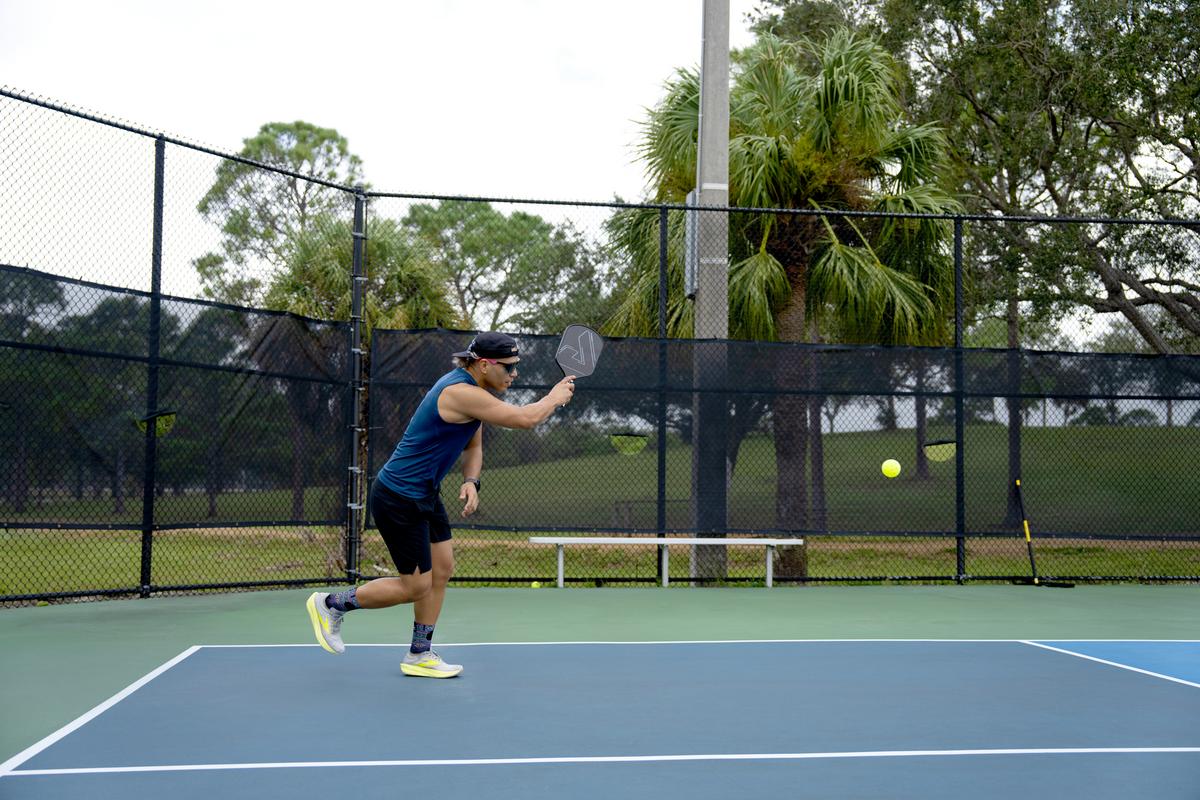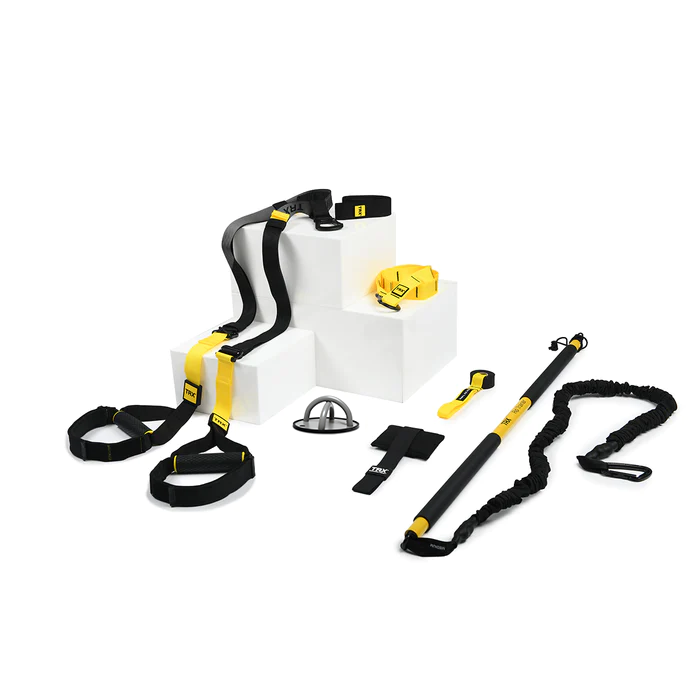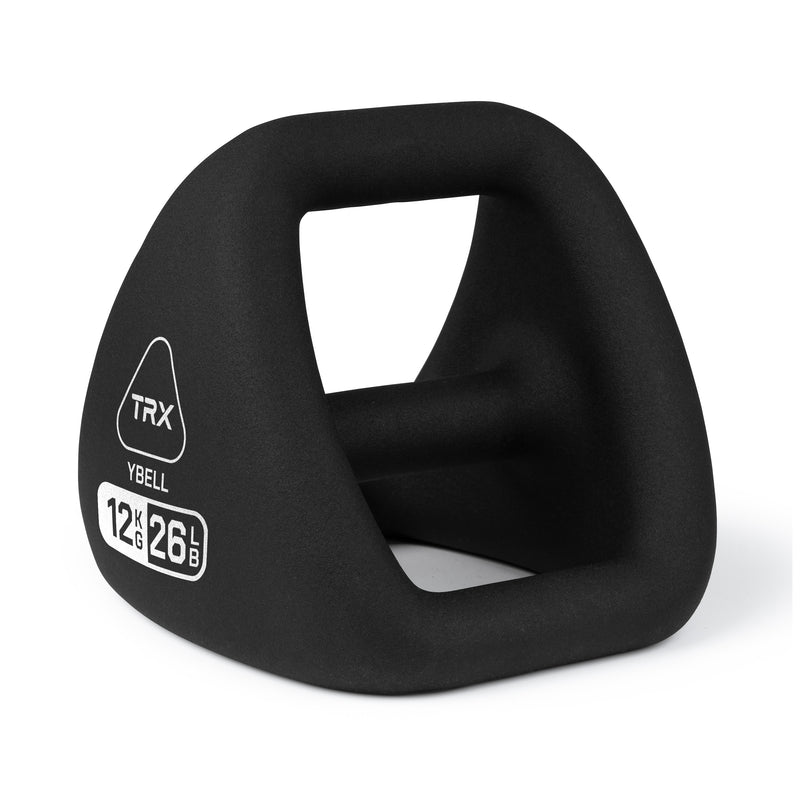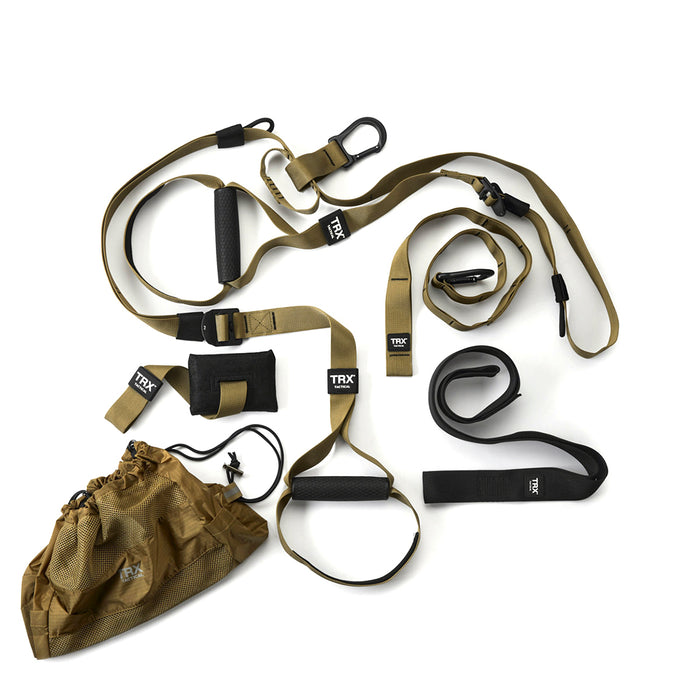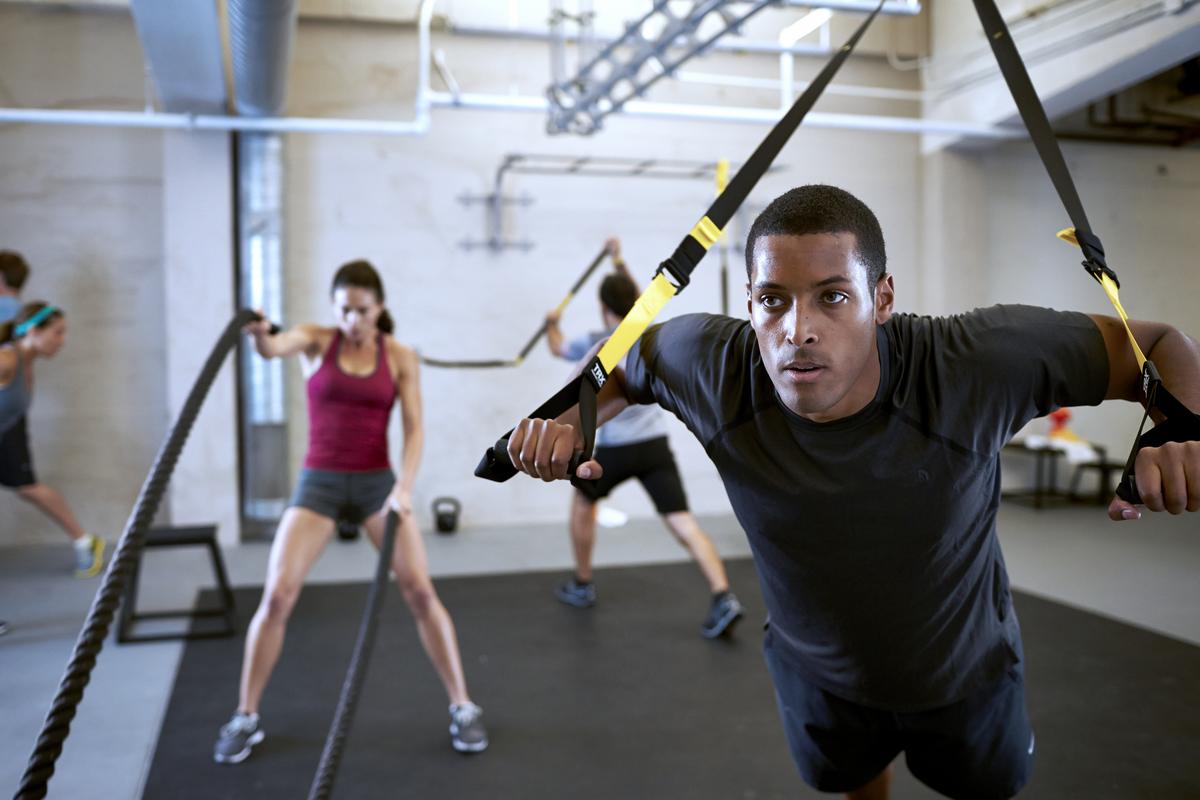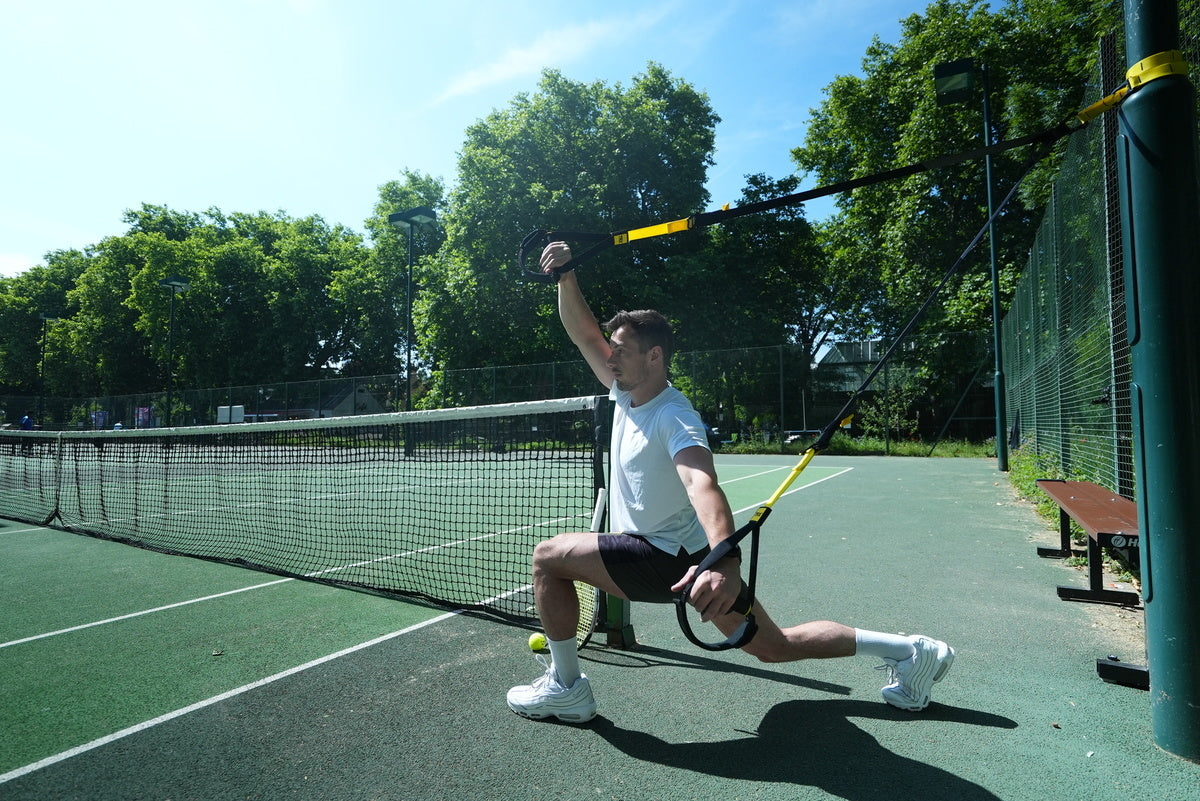Discover the top pickleball exercises in this article, designed to enhance your performance on the court. Whether you're a seasoned player or new to the game, our guide covers essential routines that improve agility, speed, endurance, and injury prevention. Elevate your pickleball game with these targeted exercises, ensuring you stay at the top of your form during those thrilling matches.
What Muscles are Important for Pickleball?
Pickleball is one of the fastest-growing sports in the world, and a sport that involves challenges to reaction time, agility, hand/eye coordination, power, balance, and overall physical fitness.
Pickleball is primarily an aerobic sport that requires sustained energy over the course of a match, which can last anywhere from 20 minutes to 1-2 hours. Pickleball also involves short bursts of high-intensity activity, including fast sprints, changes of direction, and reactions/volleys at the net.
Strength at both the lower and upper extremities is crucial for pickleball athletes. Having a strong, stable, and powerful lower extremity will assist in moving, staying balanced and changing directions effectively on-court. Being strong and possessing adequate muscular endurance through the upper extremity will assist with shot production and delay muscular fatigue.
The trunk must be able to maintain stability, postural integrity, and the transfer of forces from the lower to upper extremity. As in other racket sports, force summation should occur; with the athlete producing force through the ground with the legs, and transmitting forces up through the trunk to the upper extremity.
The Best Pickleball Exercises to Add Today
The selected pickleball exercises target your upper body and lower body, allowing for a full workout. The goal here is to improve your functional fitness via weighted and TRX exercises so that you can maximize all the muscles used when playing.
Let's get started. Here's what you'll need:
1. Multi-Planar Lunges
Lunges are a phenomenal movement for all athletes and provide a great deal of versatility in terms of the way they’re loaded and the specific planes of movement & body positions that can be targeted.
With the amount of multi-directional movement & positions that exist in pickleball, performing lunges in all directions will undoubtedly have a positive impact on your movement, strength, and balance on-court.
2. Multi-Planar Mini Hurdle Single Leg Countermovement Jumps
Single-leg countermovement jumps are a great exercise for all athletes, especially those competing in pickleball. These address ankle, knee, and hip stability, balance, and power. When performed regularly, they’ll assist with balance and movement on-court.
Use 6” mini hurdles and begin with linear jumps. Countermovement, or hinge at the hips with a slight knee bend on the working leg, jump over hurdle or cone, and “stick” the landing, aiming to make it look identical to a freeze-frame picture of the bottom of your countermovement. Stand tall, then repeat the countermovement action prior to the jump over the remaining hurdles.
Utilize the same technique for lateral jumps, making sure to keep the shoulders and hips square, not rotating in the direction of movement. You can also use cones or makers on the ground as entry-level progressions.
3. Trap Bar Deadlift
Trap bar deadlifts are a great exercise for developing total body strength, particularly focusing on the glutes, hamstrings, lower back, and core. The position of the handles of the trap bar makes this a very user-friendly exercise for most athletes, regardless of exercise experience.
At the start position, the arms should be straight, the elbows outside of the knees, and back at 45 degrees. The athlete should not be in a full squat position.
Initiate the movement by pressing the feet through the floor, maintaining core and trunk stability as the shoulders and hips move at the same rate
Squeeze your glutes and keep the core braced at the finished position, thinking about standing as tall as possible. Avoid thrusting the hips forward at the end of the movement.
Lower bar back down to the floor, once again with shoulders and hips moving at the same rate.
4. Kettlebell Swings
Kettlebell swings effectively work the hips, glutes, hamstrings, and postural musculature of the back.
Because of the amount of time spent in low positions on-court, pickleball athletes must have strong and robust posterior chain musculature.
Be sure to hip hinge during your kettlebell swings, pushing the hips back, keeping the trunk parallel to the ground, and keeping the bell at or above the level of the knees during the “down” portion.
5. Loaded Carries
Begin by holding a dumbbell or kettlebell in each hand. Stand with a great, upright posture, with the core braced, shoulders pulled back, and head held high.
Walk in a straight line, maintaining the above posture. Dumbbell/kettlebell weight should feel moderate to heavy. Make sure to challenge yourself since this is a weighted ab exercise and will help you surpass your current limits.
Progress to a unilateral (single-sided, one DB/KB) variation once you’re comfortable.
6. Box Jumps
Box jumps are a great exercise for improving lower extremity power.
Stand facing the box, then drop down quickly, then rapidly explode up, aiming to land softly on top of the box with the entire foot in contact with it.
Focus less on the height of the box and more on how quickly you can execute the “down-up” motion of the jump while landing under control.
7. TRX Chest Press
The TRX chest press is an upper body pushing strength & muscular endurance, core stability, and scapular movement. This is mainly an upper back exercise.
Due to the number of strokes pickleball athletes hit over time, upper extremity muscular strength & endurance need to be a part of every pickleball athlete’s training program.
To Perform:
- Adjust the straps to fully lengthened and stand facing away from the anchor point
- Hold onto the handles and find tension on the straps, stepping back with the feet to an appropriate angle
- During descent, bend the elbows, move the hips and shoulders at the same rate, “corkscrew” the hands outward, and think about “pulling yourself to the floor”
- Briefly pause when elbows pass the level of the trunk, “press earth away,” and return to the start position, once again moving shoulders and hips at the same rate.
8. Medicine Ball Overhead Slams & Rotational Throws
Medicinal ball overhead slams focus on total body explosive & rotational power. There are two variations: overhead slams and open/closed stance throws. Take a look at them below.
- Medicine Ball Overhead Slams: Start with the ball overhead and bend at knees and hips, explosively slamming the ball to the ground. Aim to catch the ball immediately after it hits the ground and begin the next repetition with the ball overhead.
- Open & Closed Stance Medicine Ball Throws: Medicine balls are great for loading the legs/hips, and producing rotational force as you release the ball to a partner or wall.
Try combining these with other slam ball exercises to get the full experience.
9. TRX Rows
TRX Rows are effective for upper body strength, particularly targeting the upper back, shoulders, and arms, while simultaneously engaging the core for stability. They improve posture, enhance functional strength, and reduce the risk of upper back pain. Here’s how to do the exercise.
- Adjust straps to fully shorten and stand facing the anchor point.
- Hold handles with elbows bent and hands by ribs. Step forward with feet toward the anchor point to find the desired tension
- Slowly extend arms, lowering the body to the floor while maintaining postural integrity (shoulders & hips moving together).
- Brace core and pull elbows to the side, “shoulder blades into back pockets” to return to the start position
10. TRX Y T W & Variations
Due to the amount of strokes pickleball athletes hit over time, the upper extremity, specifically the posterior shoulder endures a significant amount of repetitive eccentric stress. The TRX Y, T, and W Fly are all great for building up the upper body. One of my favorite variations is the TRX W to Overhead Press to Eccentric Y. Once you’ve mastered the exercise, add isometric holds to get more from the movement.
Try This Sample Workout for Pickleball Today
Using the exercises above, we’ve created a holistic sample workout you can do to elevate your pickleball game. You can also try our TRX Pickleball program in the TTC which is trusted by thousands across the world. Note: this workout is similar to the tennis exercises workout we covered so if you don’t have the right equipment, you can swap out exercises as you’d like.
1A. Medicine Ball Overhead & Rotational Slams: 3 sets of 5 each
1B. Linear Mini Hurdle Single Leg Countermovement Jumps: 3 sets of 5 each
2A. Dumbbell Reverse Lunge to Lateral Lunge (1 of each = 1 rep) 3 sets of 6 each
2B. TRX W to Overhead Press to Eccentric Y 3 sets of 6
3A. TRX Low Row 3 sets of 8 each
3B. Dumbbell / Kettlebell Single Arm Loaded Carry 3 sets of 20 steps each arm
4A. Kettlebell Swings 3 sets of 10
4B. TRX Chest Press 3 sets of 8
Alternate A and B exercises each set until all sets are completed, then move on to the next number. For more exercises like the ones above, check out the TRX Training Club!
Conclusion
Pickleball is a sport with a unique set of demands. Due to its nature of short, explosive, repetitive bursts across the course of a match, it is crucial to take an intelligent approach to fitness/strength and conditioning.
The exercises listed above are a great place for both beginner and experienced level exercisers to start if they want to develop their pickleball game and become the best on the court.

